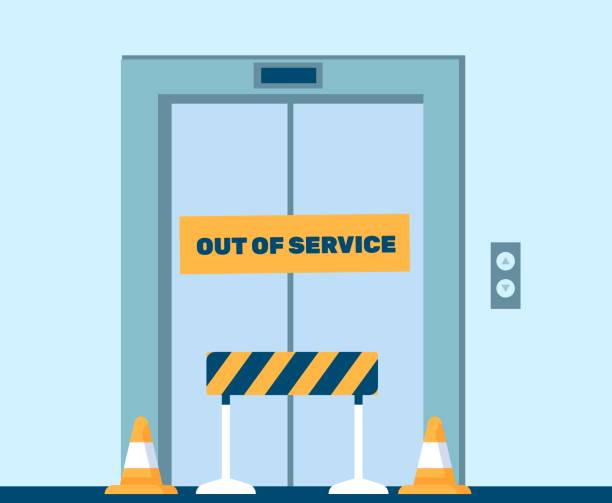A Detailed Strategy to Enhancing Performance Via Strategic Lift Repair Work Strategies
A organized and tactical strategy to raise repair work and upkeep is essential to make the most of performance and lessen downtime. By attending to typical lift issues, applying aggressive maintenance procedures, and creating targeted fixing plans, facilities can maximize their lift systems to run at peak efficiency degrees.
Significance of Lift Efficiency Optimization
Recognizing the value of maximizing lift efficiency is critical for making sure reputable and effective upright transportation systems in various buildings and frameworks. Lifts are important parts of modern-day infrastructure, supplying vertical wheelchair for occupants and products within buildings of differing elevations. By optimizing lift efficiency, structure proprietors and facility managers can enhance individual experience, enhance energy performance, and rise total functional effectiveness.
Efficient lift efficiency optimization entails various elements, including speed, capacity, power safety and security, intake, and upkeep demands. Effectively maximized lifts can reduce wait times for users, particularly in high-traffic structures, causing improved satisfaction and performance. In addition, optimized lifts contribute to power savings by making use of sophisticated control systems and innovations that minimize power intake without jeopardizing performance.

Identifying Common Lift Issues
Determining usual lift issues is necessary for preserving the operational performance and safety of vertical transportation systems in buildings. Identifying these concerns can aid avoid breakdowns, reduce downtime, and prolong the life-span of the lift devices. One typical problem that structure managers and maintenance groups frequently run into is irregular or jerky motions during operation. This issue can be a sign of issues with the lift's motor, control system, and even the positioning of the lift car.
An additional prevalent lift problem is odd sounds emanating from the lift shaft or equipment room. These sounds can range from grinding or scraping sounds to loud clunking sounds, every one of which may signal underlying mechanical issues that need immediate interest. Furthermore, constant door breakdowns, such as doors not opening or shutting properly, can disrupt the smooth circulation of guests and position safety risks.
Implementing Positive Upkeep Measures
To maximize the performance and durability of lift systems, proactive maintenance procedures play an essential role in making certain functional integrity and security. platform lift dimensions. Carrying out proactive maintenance involves methodically examining, maintenance, and repairing elements prior to they fall short, thus preventing expensive downtime and prospective safety dangers. Frequently arranged examinations can aid recognize minor problems before they escalate right into major issues, ultimately expanding the life-span of lift systems
One trick element of positive maintenance is developing an in-depth upkeep timetable based upon manufacturer recommendations and market best practices. This timetable should describe tasks such as lubrication, alignment checks, and element replacements at defined periods. In addition, implementing problem tracking methods, such as resonance analysis and thermal imaging, can help spot very early signs of wear or breakdown.
Additionally, training upkeep personnel on proper assessment strategies and precautionary maintenance treatments is essential for the successful implementation of positive upkeep steps. By promoting a society of positive upkeep within an organization, lift systems can operate at peak performance levels, minimizing interruptions and guaranteeing the safety of customers.
Establishing Targeted Repair Plans
Upon examining the upkeep documents and efficiency data, the engineering group can develop targeted repair work strategies to enhance and attend to certain concerns lift system functionality. These fixing strategies are customized to the identified problems, guaranteeing that sources are concentrated on settling crucial problems effectively. By prioritizing repair work based upon their effect on efficiency and safety and security, the targeted fixing plans assist lessen downtime and maintenance costs while optimizing the lift system's dependability.
Creating these plans involves a thorough evaluation of the lift system elements, consisting of electric motors, cables, brakes, and control systems. Through this in-depth analysis, the engineering group can figure out the root triggers of any malfunctions or deterioration in performance. This info is after that used to produce a roadmap for the repair service procedure, outlining the required steps, timeline, and resources needed to attend to each issue effectively.
Furthermore, targeted fixing strategies might include preventative actions to boost the lift system's durability and efficiency. By proactively addressing prospective issues before they intensify, these plans add to the general effectiveness and safety of the lift system.
Using Data-Driven Insights
Using the power of data-driven understandings is crucial in enhancing lift system performance and upkeep efficiency. These anticipating upkeep methods aid protect against unexpected malfunctions, reduce downtime, and expand the life expectancy of lift systems.

Final Thought
In verdict, enhancing lift efficiency is essential for making certain performance and safety in structures. By determining typical lift problems, carrying out proactive maintenance steps, establishing targeted repair work strategies, and using data-driven understandings, organizations can improve performance and decrease downtime. It is very important to take a thorough technique to raise repair work approaches to maximize functional efficiency and make certain the durability of lift systems.
By dealing with usual lift issues, applying positive upkeep procedures, and developing targeted repair strategies, facilities can maximize their lift systems to operate at peak performance degrees.Another prevalent lift issue is unusual noises platform lift dimensions emanating from the lift shaft or machinery space.Upon analyzing the maintenance records and performance information, the engineering group can create targeted repair strategies to maximize and resolve details problems lift system performance. By focusing on repairs based on their effect on performance and safety and security, the targeted repair strategies assist minimize downtime and upkeep prices while making the most of the lift system's dependability.
It is important to take a detailed technique to lift fixing strategies to optimize operational performance and guarantee the long life of lift systems.